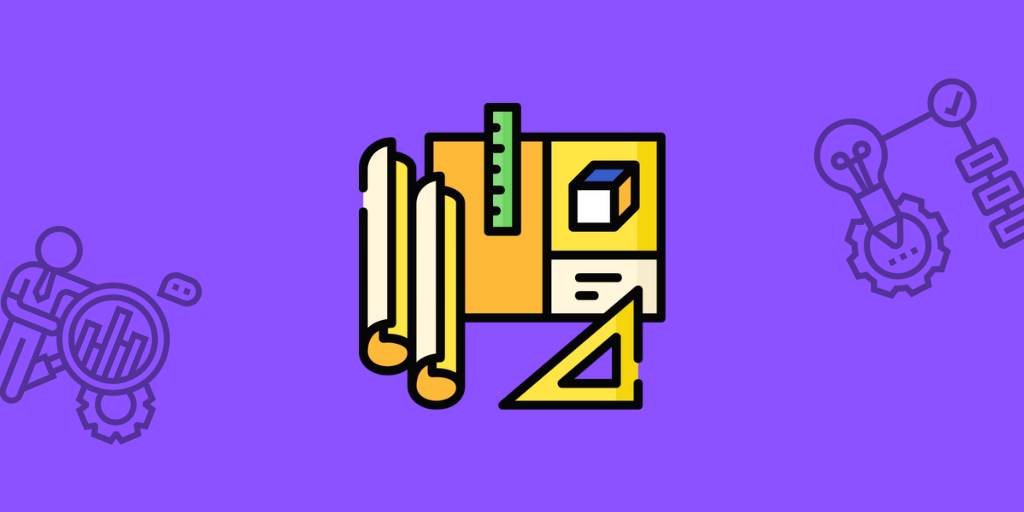No matter what project you are working on, your success is measured against your project deliverables.
Determining the right project deliverables without actually under- or overshooting your project goals is an art in itself: Depending on the project scope, you need to coordinate key stakeholders and interrelated project milestones.
Further, you need to take into account many internal and external factors that can influence the outcome of your project. This requires a thorough project plan from the get-go.
Therefore, this article aims at sharpening the skills of any project manager, to help get a bird’s eye view of the project scope and come up with achievable key project deliverables.
What are project deliverables?
Project deliverables are tangible or intangible outcomes, which are determined at the beginning of each project management phase. The type of project deliverable strongly depends on the project you are dealing with.
While product managers are mainly concerned with finishing a product in a pre-defined timeframe, the project deliverables of marketing managers might be the sales conversions of a specific project.
No matter what type of project you are dealing with, most projects can be divided into project management phases. These phases include all the steps from start to finish.
A project process can generally be broken down into five different steps. Project deliverables play a core role in all of these steps.
The project scope statement is defined in stage one and further refined in stage two, while the later stages measure your success against these project deliverables.

Therefore, it is crucial to have a clear understanding of the impact of your project deliverables.
To gain this understanding, we are going to compare project deliverables with other different kinds of deliverables, which all play a role in each project.
Project deliverables vs. process deliverables
A project consists of multiple processes. To build a car, you need a lot of processes to create all the single components, which make up the final product.
Therefore, a process deliverable could be the windshield, engine, etc, while the project deliverable would be the final car.
Not only physical products but also digital projects involve processes. In a video project, process deliverables might be the video script or images.
Project deliverables vs. milestones
While process deliverables are manifold, milestones are certain crucial events in the project.
For instance, mobile app development milestones include data storage, server-side logic, UI design, UI development, and testing, just to name a few. And each milestone consists of multiple process deliverables.
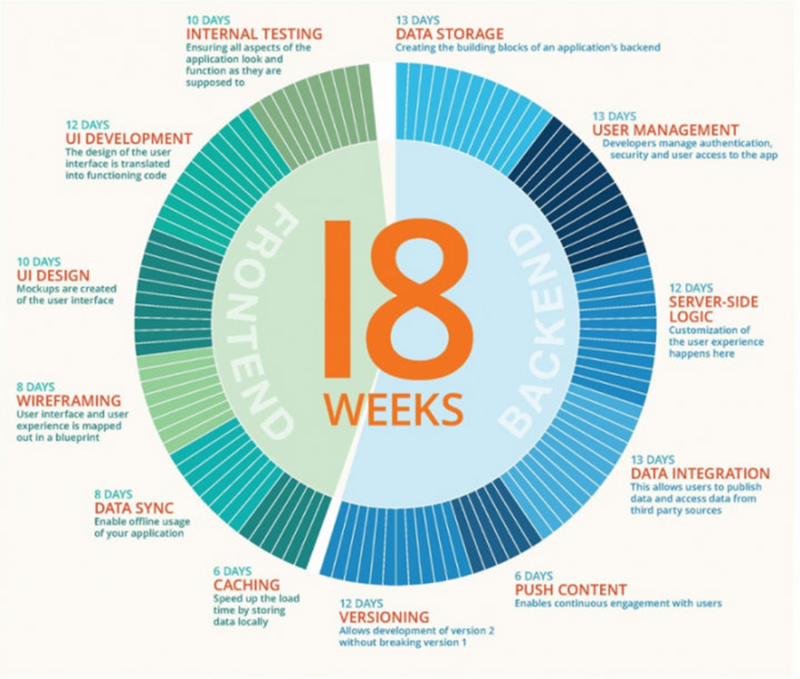
A project process can be broken down into several steps. While a project leads to a specific outcome, the process itself can be divided into milestones, which in turn consist of the results of multiple process deliverables.
This means a project manager needs to have a good overview of all the details that make up the whole project. The more you know about each detail, the better you can predict potential bottlenecks, which may threaten the project.
Project vs. product deliverables
Depending on the definition, project and product deliverables can be the same thing.
In our examples above, the car is a project deliverable as well as a product deliverable.
However, some people make a further distinction between project deliverables and product deliverables.
In a narrower sense, project deliverables are often synonymously used with planning deliverables, which contain the project plan, project schedule, project calendars, a SWOT analysis, signed contracts, or the entire project charter.
As stated above, our definition of project deliverables encompasses both the tangible and intangible outcomes of a certain project.
What are three examples of deliverables?
Project deliverables do not only depend on the project but might also differ depending on factors such as external and internal stakeholders. It is important to be aware of these distinctions, as the dynamics of internal or external projects can change drastically.
Internal deliverables
An internal deliverable takes place inside your organization and is not visible to the end-user. However, an internal deliverable is likely a prerequisite to delivering the final outcome. To take the mobile app development example above, a lot of steps take place internally, such as all backend processes. Therefore, internal deliverables are a crucial part of the project deliverables.
External deliverables
While internal deliverables play a crucial role in achieving milestones on the way to a specific product or service, external deliverables are meant for your client. No matter how good your internal deliverables are, the overall success of the project is usually measured against your external deliverable, as this is what your client asked for. Therefore, you need to make sure that your external deliverable supports the objective of your client.
Planning deliverables
As described above, the term ‘project deliverable’ is often confused with ‘planning deliverable’. Even though planning deliverables are intangible, they give project managers a roadmap and structure for the entire project. Planning deliverables might be a project charter, project plan, or any other deliverable that helps plan and structure your project. Planning deliverables are a prerequisite for defining project deliverables and take place in stage one and stage two of the entire project process.
Example: Marketing deliverables
During the last sections, we described a lot of related terms, to give you a better understanding of what project deliverables actually entail. Now let’s apply our knowledge to examples of project deliverables. Most marketing deliverables are external, which means that they are produced for clients or customers.
Every day, marketing teams around the world work on a wide range of project deliverables. These range from large-scale deliverables, like websites and whitepapers, to smaller deliverables, like blog articles and social media posts. Cross-functional deliverables may include visuals or a website wireframe.
Each marketing project deliverable has a distinct goal and purpose, which are often united by the fact that they all exist to transmit an important message.
For instance, if you create a video ad for YouTube, you need to come up with planning deliverables, such as the video budget and timeline, which are usually correlated to the timeline of your product development process. Further, you need to create milestones, such as video drafts, to get a good structure from start to finish.
Your project deliverable (the final video) will be measured against KPIs, such as views or sales conversions, which will have been established at the beginning of the project. Your video project will be a success or failure, depending on whether or not the KPIs have been met.
Now you should have a good understanding of what project deliverables entail and what the difference is between an internal and external deliverable, as well as what role planning deliverables play in your project deliverables.
In the next section, we are going to show you how to set up project deliverables yourself, which will help you achieve your goals and objectives.
How to define project deliverables
As you have seen from the sections above, project deliverables are the final outcome of a project. While it is usually easy to determine the final deliverables, it is more complicated to define all the steps on the way to creating the final asset.
Set milestones and process deliverables
After you have defined the final goal, you need to set project milestones and determine interdependencies for each step involved. You need to disassemble all processes and set process deliverables on the way to achieving your milestones.
Further, you need to outline which of the processes can be handled internally and whether external stakeholders need to be involved.
Create project charters
Depending on the size of your project, it is advisable to create a thorough project charter, which includes a project description, objectives, and KPIs, as well as deliverables and stakeholders. You can further add a project scope statement and a work breakdown structure (WBS), to have everything you need in one place.
Based on all these factors, you can start creating project management charts, which give you a bird’s eye view of the project’s scope.

To add another example: If you need to create your company website, a project charter might include the description of each sub-section, measurable goals, such as viewers or sales conversions, as well as possible risks, such as website downtime.
While your entire web page is the final result, milestones might include individual product pages or the payment structure of your webpage.
The picture below summarizes all the milestones involved on the way to creating a working webpage. As you can see, a lot of phases are interrelated and depend on each other.

Depictions like these offer a great way to keep an overview of the project.
However, in order to make the most out of your projects and streamline all the processes involved, you need to make use of project deliverable software.
Top five project deliverable software programs in project management
This paragraph outlines the most important project management tools and software applications to streamline your processes, aid your team’s work and boost collaboration between all stakeholders involved.
Filestage
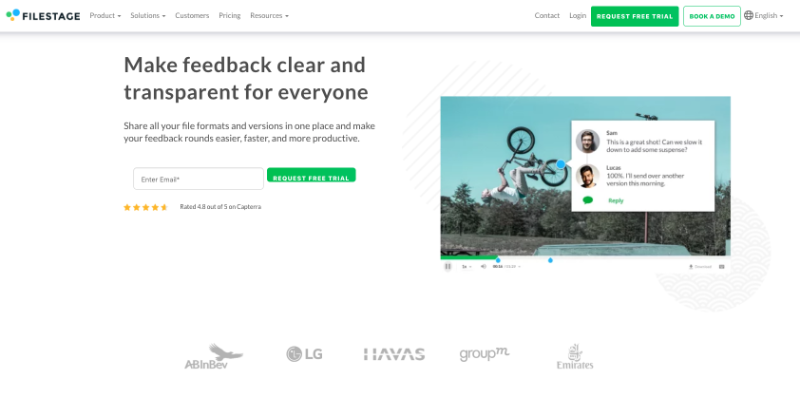
Filestage makes feedback clear and transparent for everyone involved. Creative and marketing teams can share all tier file formats and versions in one place and make feedback rounds easier, faster, and more productive.
Instead of juggling tools and email chains to consolidate feedback, all reviewers leave their comments in the same file. This allows them to discuss conflicting comments with other reviewers and collaborate in real time.
Filestage also automates file-sharing, reminders, and file-versioning, as well as helping project managers track the status and progress of every file. This way, teams have more time to focus on creating their best work.
Asana
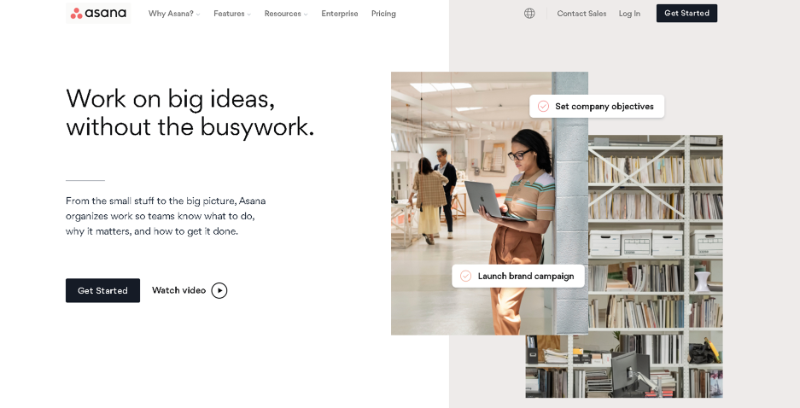
Asana is a work management solution, with which you can easily manage multiple projects on one single interface. No matter whether it is about defining deliverables, the project’s objectives or assigning the project team to different project deliverables, the Work Graph™ data model of Asana has got you covered.
Even though Asana is a good starting point for smaller organizations, limited collaboration features with external project stakeholders make the software more complicated for organizations that work together with a wide range of freelancers or external clients.
Kissflow
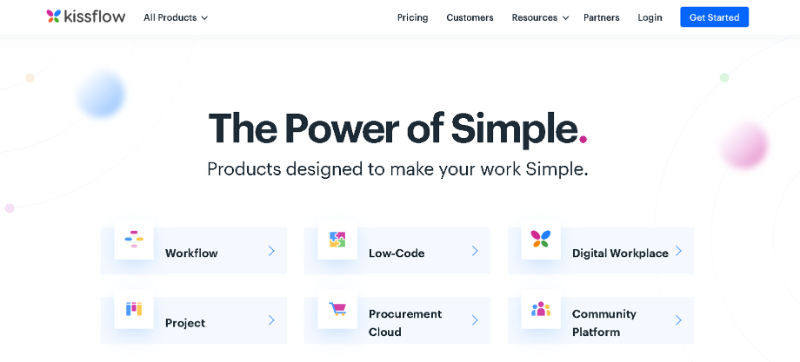
Kissflow is a visual form and workflow designer to create business processes, which cater to specific departments and project types. This means that Kissflow can also be used by the development team or other creative teams. This software solution has everything project managers need, including dashboards, dynamic reporting, process optimization and task management features.
Even though your team members don’t need coding skills to use the software, the application has a rather steep learning curve at the beginning. This means that you need to take into account an adjustment period when you introduce the software to your team members. Therefore, it is advisable to let a project manager test the software solution before committing to a subscription.
ProjectManager
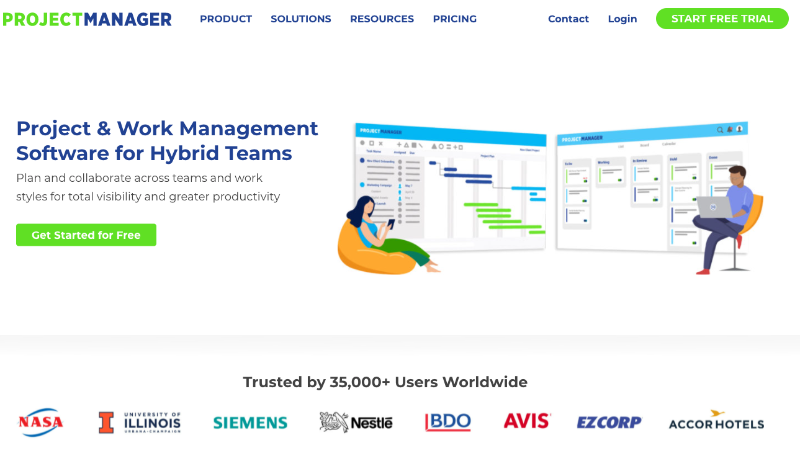
ProjectManager is a feature-rich software solution, which can help project managers visualize project deliverables in many different ways. No matter if you prefer to use a Gantt chart, a Kanban board, or a wide range of other visual tools, ProjectManager has you covered and is especially valuable in the planning phase.
ProjectManager has all the features needed to set up and run a project. The problem is that some of the manual tasks, such as assigning resources to specific processes, can take a lot of time. This can be a disadvantage if you work on complex projects, which involve a lot of small, interrelated processes. Therefore, the more complex the project deliverable, the more difficult it may become to set up everything in the first place.
Wrike

Wrike offers a versatile and scalable project management solution, which enables you to get a thorough overview of all your deliverables for project management. You can easily see which task is active, in progress, has an upcoming deadline, or is completed. The resource management tool even enables you to see which team member is assigned to which task, so that you won’t overburden your team members.
Some users complain that the high customization options offered by the program can hinder team members without project management experience, in making full use of the features.
How to monitor and present project deliverables
Once you have established your project deliverables, you need to monitor and present the progress of the desired outcome, as well as the associated KPIs. Fortunately, there are numerous ways you can present deliverables for the purposes of project management.
Gantt charts
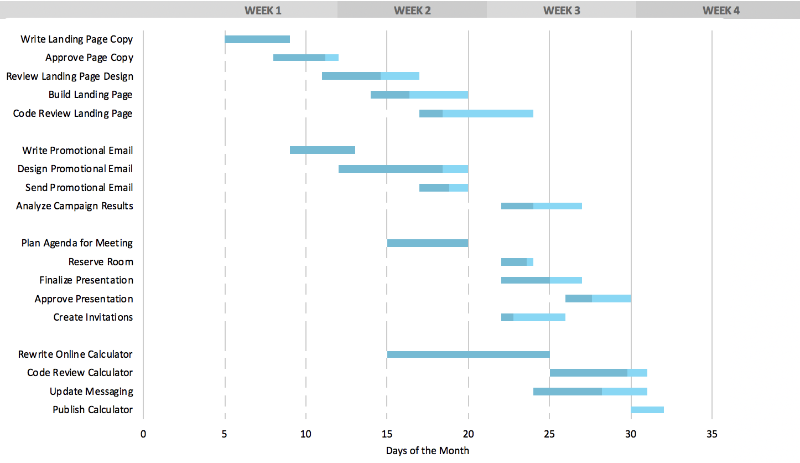
One of the most common ways of presenting deliverables for project management is Gantt Charts. These kinds of charts usually list the processes and project deliverables on the y-axis and the timeline on the x-axis. Interdependencies between tasks can be highlighted with arrows. Advanced charts also indicate the progress of each individual task.
These charts are a great way to structure your overall project from start to finish. Once you start creating a chart, you will automatically learn more about your project deliverable and might find some new ideas for how to streamline your processes.
Kanban boards
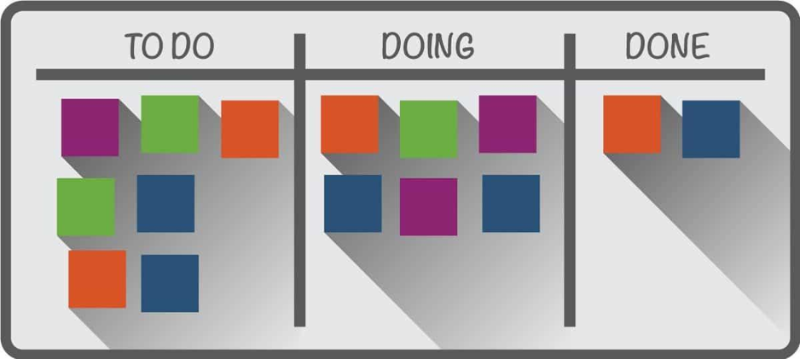
While the previous example gives you a great overview of all the different tasks at hand, Kanban boards can help you structure each task, according to its progress. In its most simple form, a board consists of three columns, which indicate the tasks to be done, tasks in progress, as well as already finished tasks.
Such a visualization helps a project manager structure tasks and decide on how to allocate resources. Therefore, Kanban is not only considered a visual representation, but also a mindset.
Custom design presentation
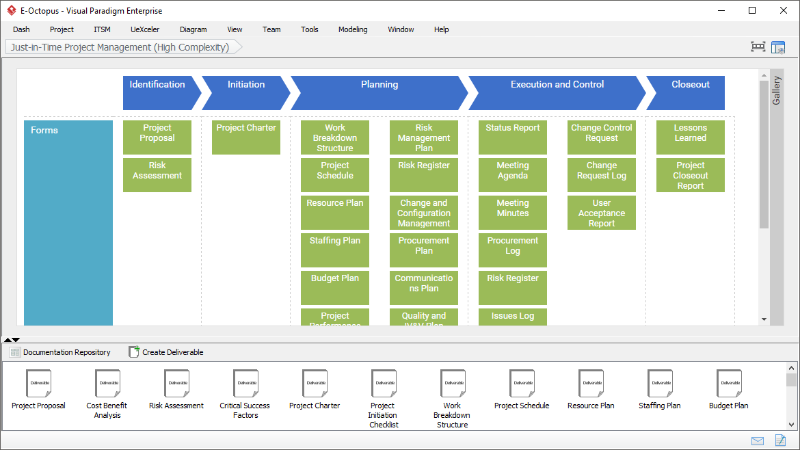
Kanban boards and Gantt charts are two of the most commonly used ways of presenting deliverables for project management. However, there are many more ways of monitoring and presenting your project charter and milestones to key stakeholders.
The choice of how to present project management processes and project status reports depends not only on project objectives or the number of project milestones but also on personal preferences.
This is why you should get the opinion of all project stakeholders, as they need to work with it on a daily basis. Objective, focused work is only possible when your team members are on board.
Further, it is crucial that you clearly identify all important project steps and make them visible in your presentation.
As a general rule of thumb, simplicity beats accuracy. This is especially helpful when you are dealing with large projects. Here, it is advisable to concentrate on a few criteria and key deliverables, which are crucial to creating the final outputs.
Seven pro tips for managing deliverables
Now that you know the most important facts of deliverables in relation to project management, the next section goes into more detail by outlining hands-on examples for the deliverables in your next project.
1. Define your project deliverables in the planning stage
First things first: You’ll want to zoom out and get a complete view of the life cycle, the processes, and the objectives of your project.
From this perspective, you’ll be able to see what the goals of the project and your own deliverables are, why it’s being executed, and what you’ll need, in order to be successful.
To get a better idea of the project deliverables you’ll need, you’ll want to answer the following questions:
- What’s the overall purpose of this project and project deliverable?
- What does the client hope to achieve from the project / deliverable?
- What do you need to produce to meet the objectives?
- How are these items going to be produced?
- Does your agency or in-house team have enough time to produce these items?
2. Determine the kind of deliverables you need
Now that you have a better idea of the project deliverables you need to complete, it’s time to dig a little deeper into those project deliverables. You’ll need to accurately define the project requirements and primary objective of each project deliverable. You’ll also need to understand what the key deliverables and acceptance criteria of your organization or client are.
3. Look for dependencies between deliverables
How do you prioritize tasks in your project? Now that the project requirements have been established, it’s time for the project manager to work their magic, and break the project deliverables down into smaller chunks. This exercise will help project managers develop a timeline, to better plan the project schedule.
4. Know the difference between process and project deliverables
Don’t make the mistake of confusing process and project deliverables. While project deliverables are the final deliverables / key deliverables, process deliverables help you achieve your project milestones. Adding additional project deliverables will just make the entire process unnecessarily complicated.
5. Update your team regularly
Project management requires communication. You need to find ways to communicate your objectives and progress with all stakeholders and make sure to establish a deliberate work atmosphere. It is advisable to set up fixed meetings at regular intervals, to get better oversight of the status of each project deliverable. Also, make sure each of your team members fulfills a definite role so that the work performed is traceable.
6. Use the right tools
As we have seen, tools are necessary to keep track of a complex project. If you don’t use any project management software yet, this should be the first step.
7. Get feedback from stakeholders
No matter whether your stakeholders are end-users, your clients, or team members from different departments, you need to find ways to gather feedback in the most efficient way.
When your project revolves around digital content, you should use review and approval software, such as Filestage, to streamline processes and get faster, clearer feedback and approvals on your work.
Project deliverables templates
Looking for a resource that will help you get a clearer picture of your project deliverables? We have just what you’re looking for.
Start by downloading our project deliverables template. This free document will help you plan out your project deliverables and ensure they’re accurate, effective, and of the highest quality.
This helpful template gives you a space to list every planning, internal and external deliverable within your project, and add a range of critical information. You’ll be able to add a description and assign an owner, and you can also adjust the status of each deliverable over time.
Conclusion
Defining, monitoring, and implementing project deliverables is a key aspect of project management. Since you are dealing with unknown variables, you need to structure your new project in the most efficient way, to generate revenue, avoid bottlenecks, and decrease unnecessary costs.
Employing a structured approach and using software solutions is the first step in the right direction, no matter if you are dealing with your next social media campaign or even larger projects.
We hope this article has given you a good starting point for how to establish clear project objectives, reduce redundancies and streamline all your processes, to produce your key deliverables.

